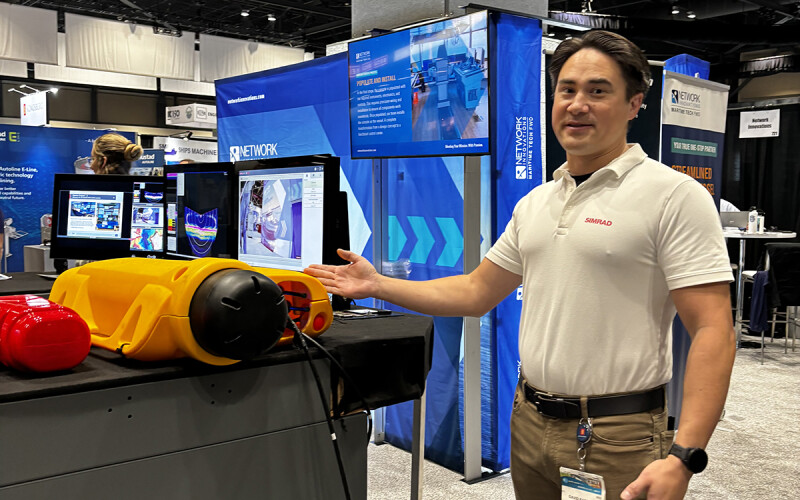From issues complex and high-tech to others much simpler but equally relevant, the Future of Fisheries Panel on PME’s opening day shed light on what is coming in fisheries and what they hope to see. David Barbee from Simrad and Daniel Joram from Nobeltec offered previews of what’s coming on the technical side, and fishermen Sean Dwyer and Brent Taylor talked about how they were using available technology.
Joram highlighted Nobeltec’s development of a TimeZero Pro app with multiple layers of information. “For the first time, you can see layers of dissolved oxygen, chlorophyll levels, and real-time current information. The idea is to help guide fishermen to where the fish are and reduce the time they spend looking,” he said. In addition, Joram noted the ice cover information that is important to crab fisherman Sean Dwyer.
“When we’re fishing for snow crab, we have to fish close to the ice,” said Dwyer. “If that ice moves down quickly, you can lose all your traps, lose your season. We like being able to have that information in real-time.”
Simrad is a leader in fish finding technology and is using that to help reduce bycatch, which has become an increasingly important issue for pollock vessels being blamed for a drop in chinook salmon returns along the Bering Sea. “One of the things we’re working on is an actuater that can lower a panel in the net to let the fish you don’t want to escape,” said Barbee, while trawler captain Brent Taylor noted that the Simrad’s FX 82.0 allowed him to identify and avoid non-target species.
In addition to the discussion about what technology is currently available and how it is being used, the panel members’ which lists included a stability alarm. “I’m talking about something that can give the crew time to get into survival suits if they can’t address the problem,” said Joram. “I’m setting the bar low.”
Fisherman Sean Dwyer mentioned the graying of the fleet and wondered how to attract more talented youth into the industry. “We need people who can work with this technology,” he said. David Barbee hoped to see more connectivity between the technology on board so that machine learning could control when to trip the actuator of a net panel when non-target species entered the net, while Brent Taylor wondered when they might have drones to help look for fish.
What made the panel particularly enjoyable was the relaxed and jovial exchanges between the members and moderator, Noelle Yochum, whose experience working with nets and technology enabled her to assemble an informative group of professionals.







